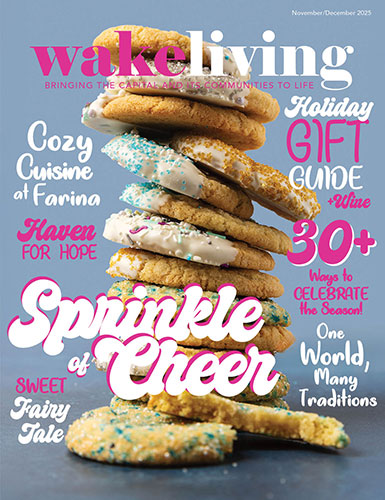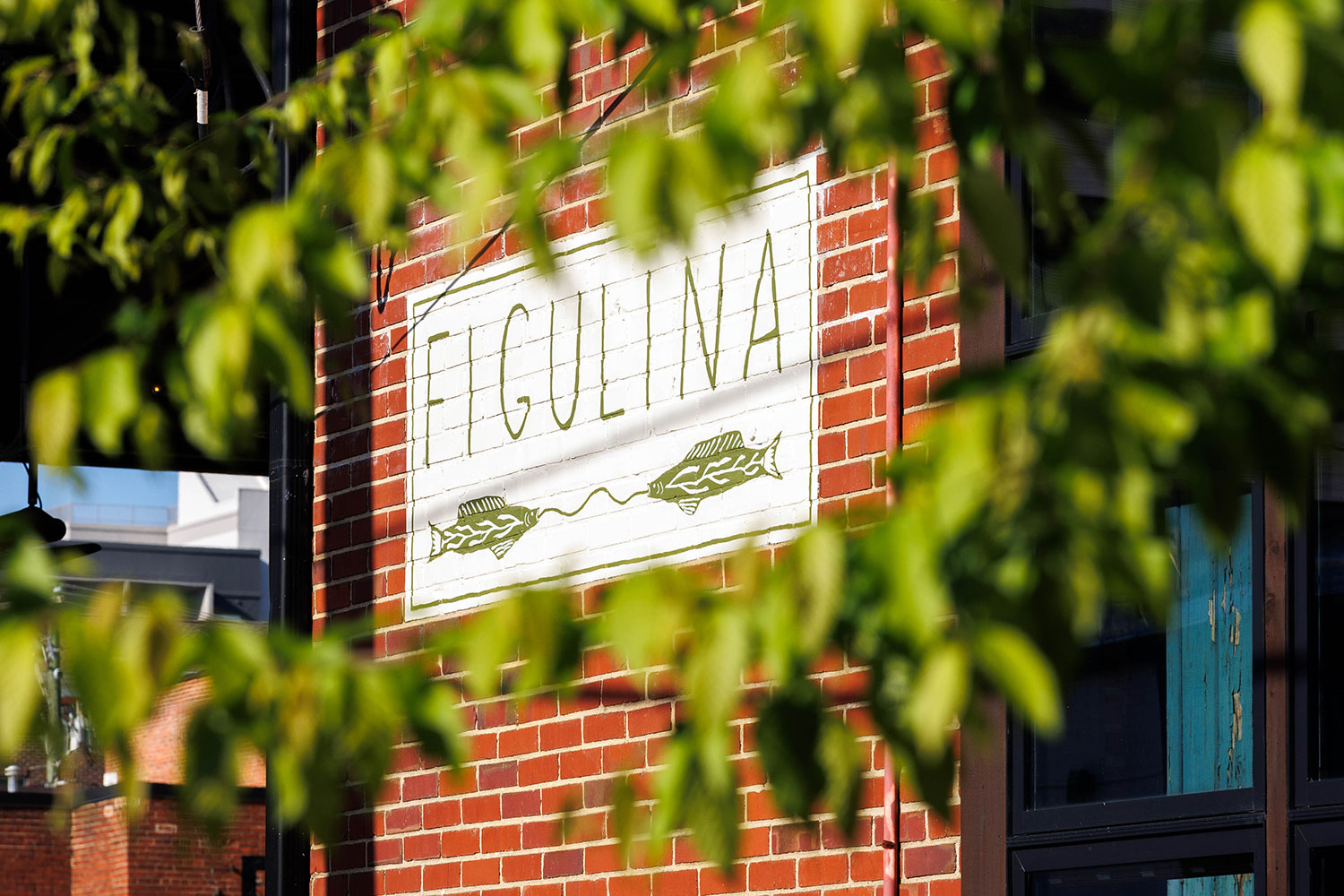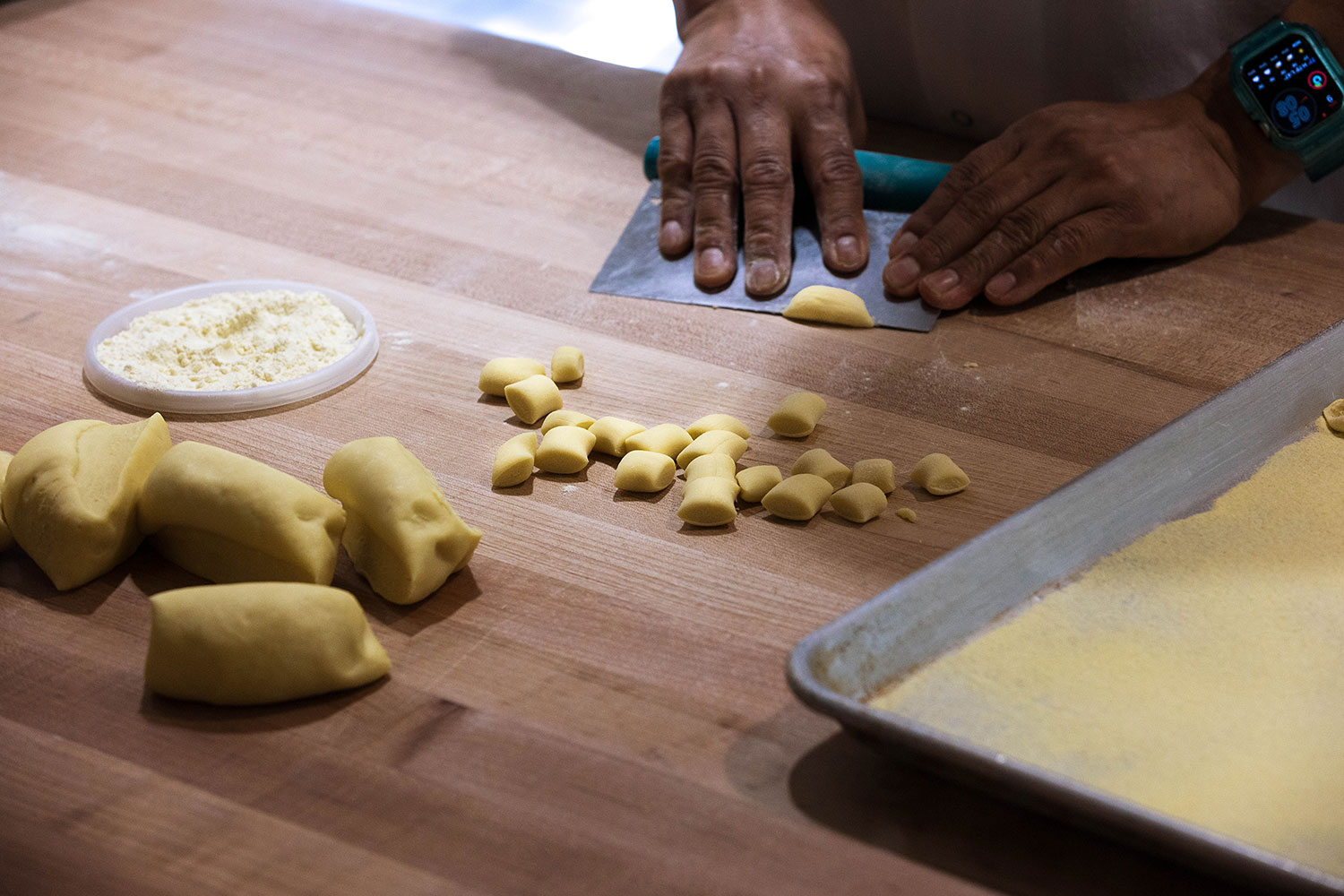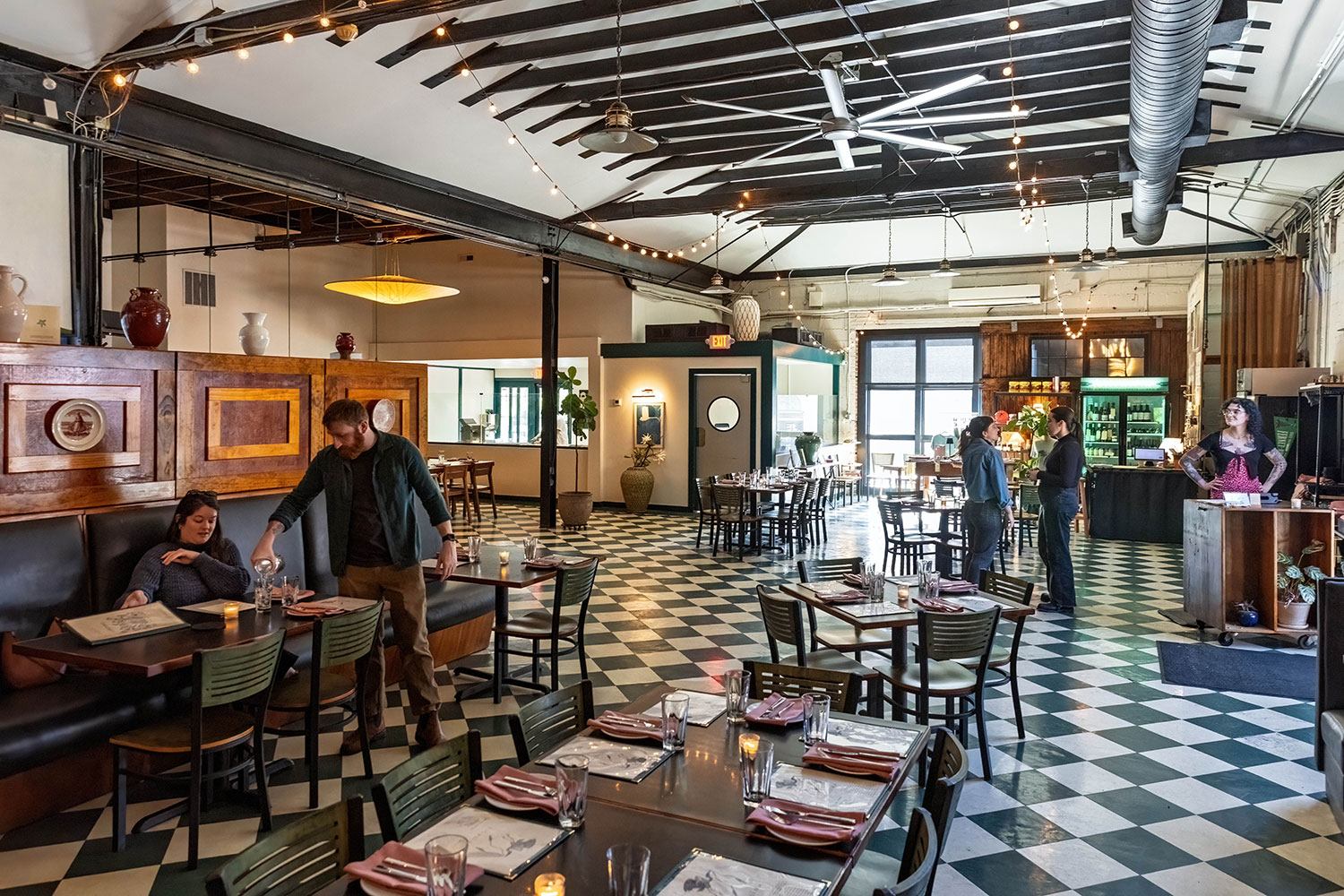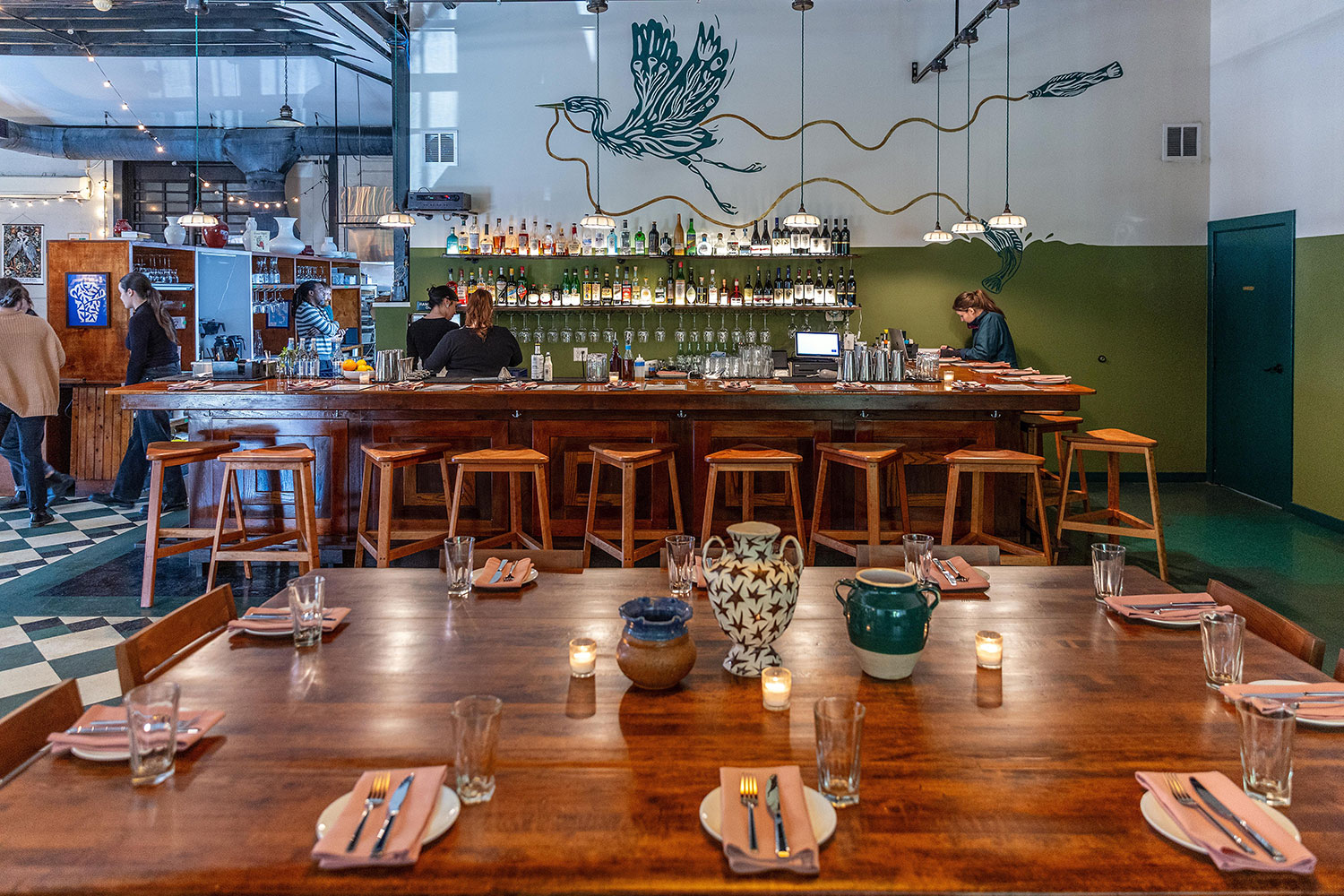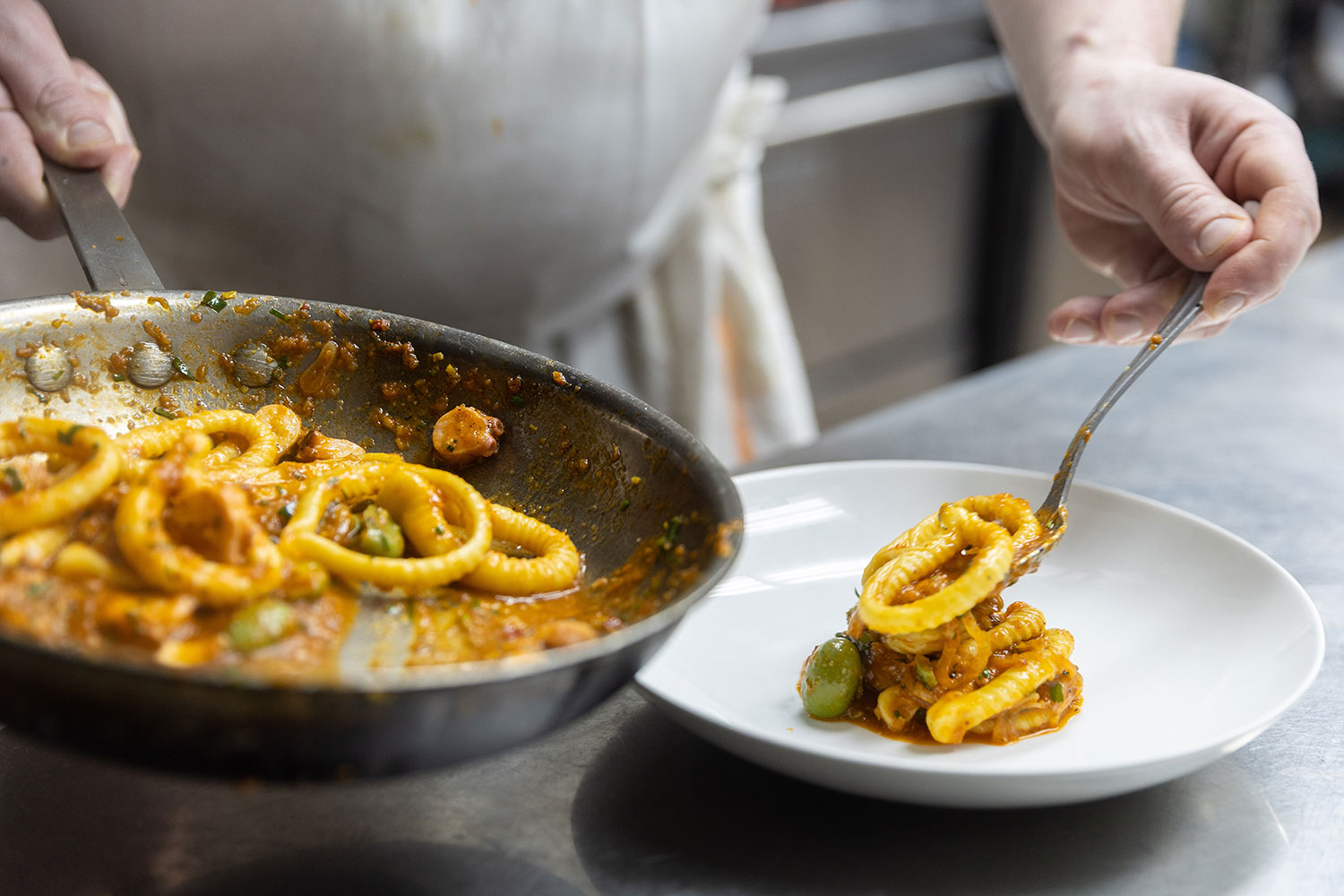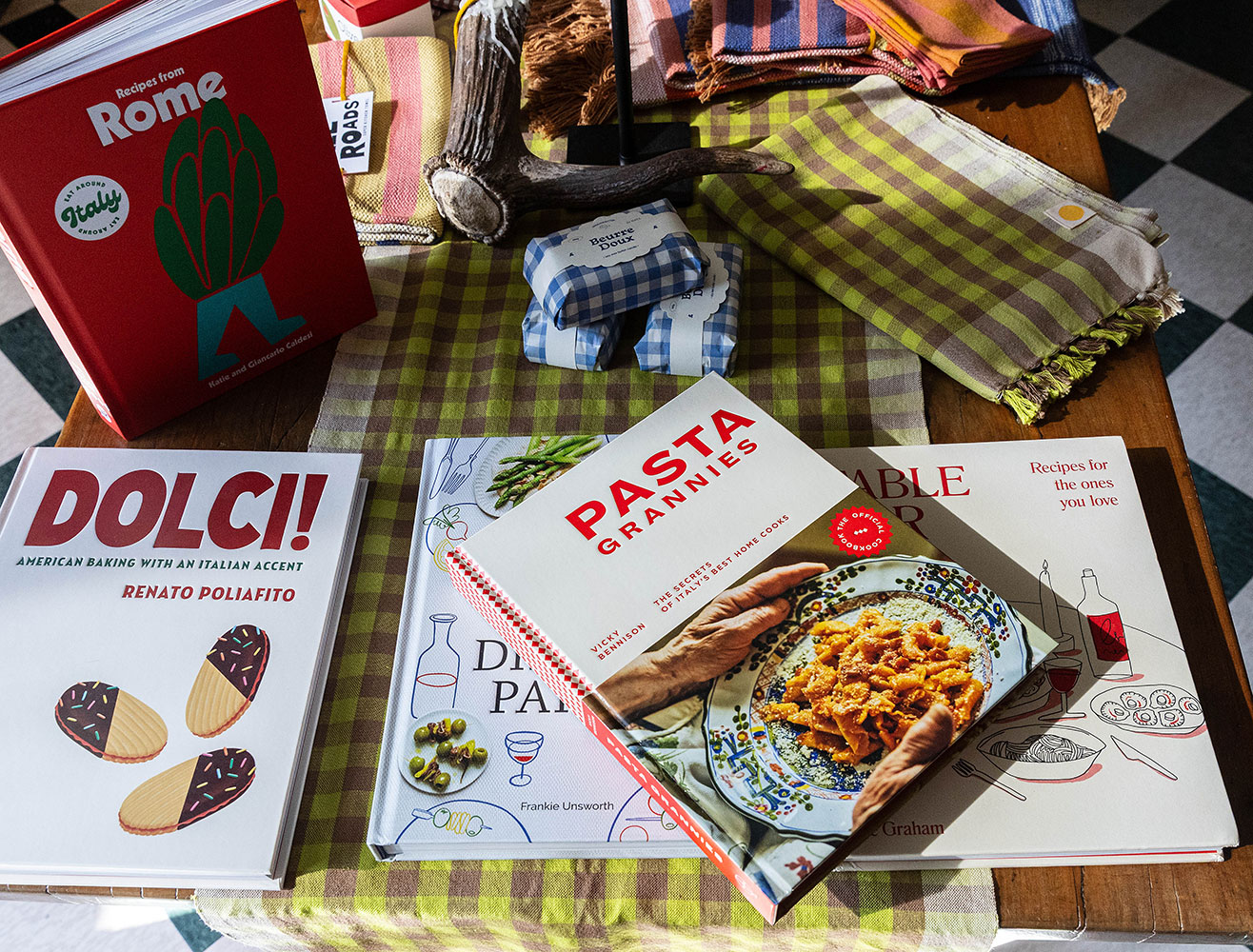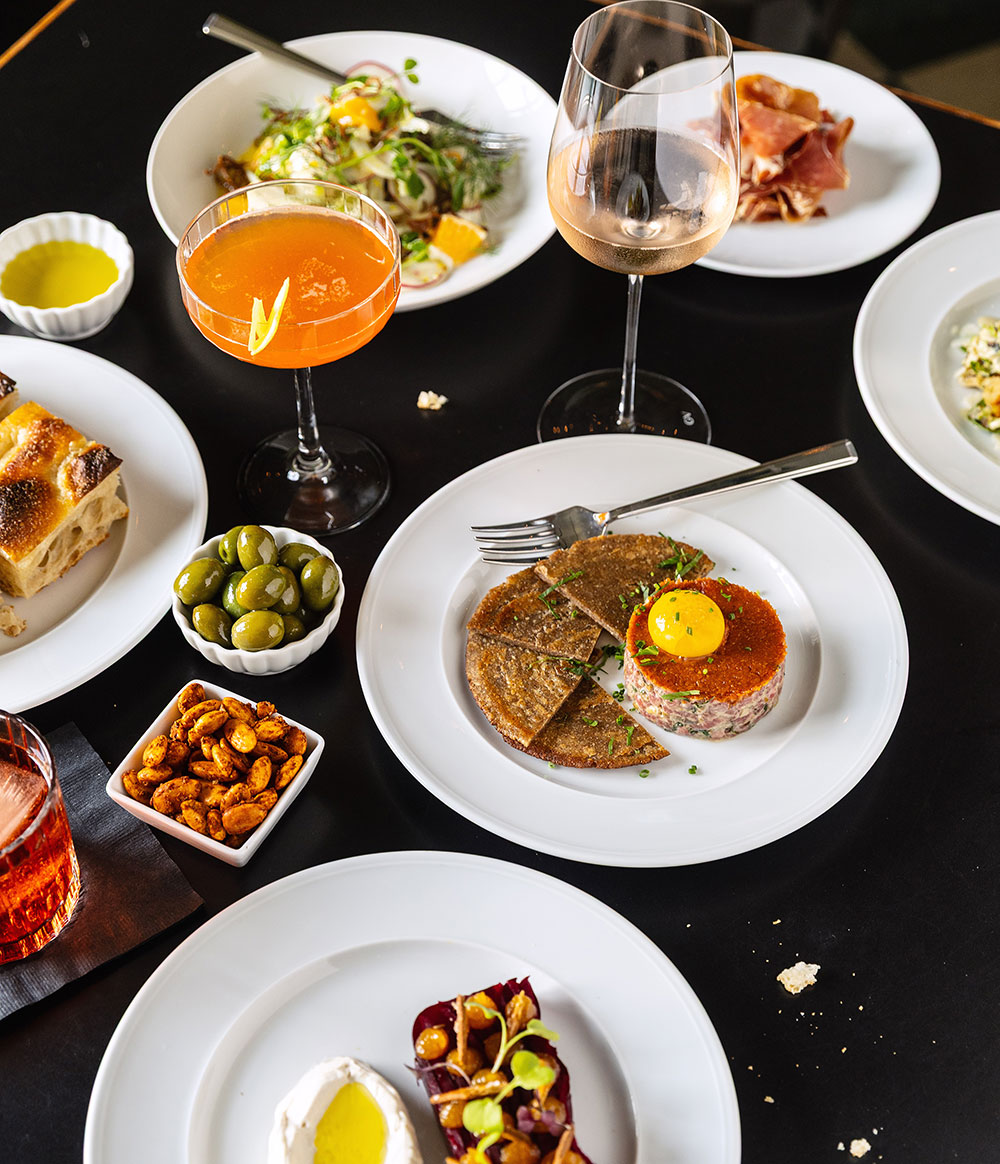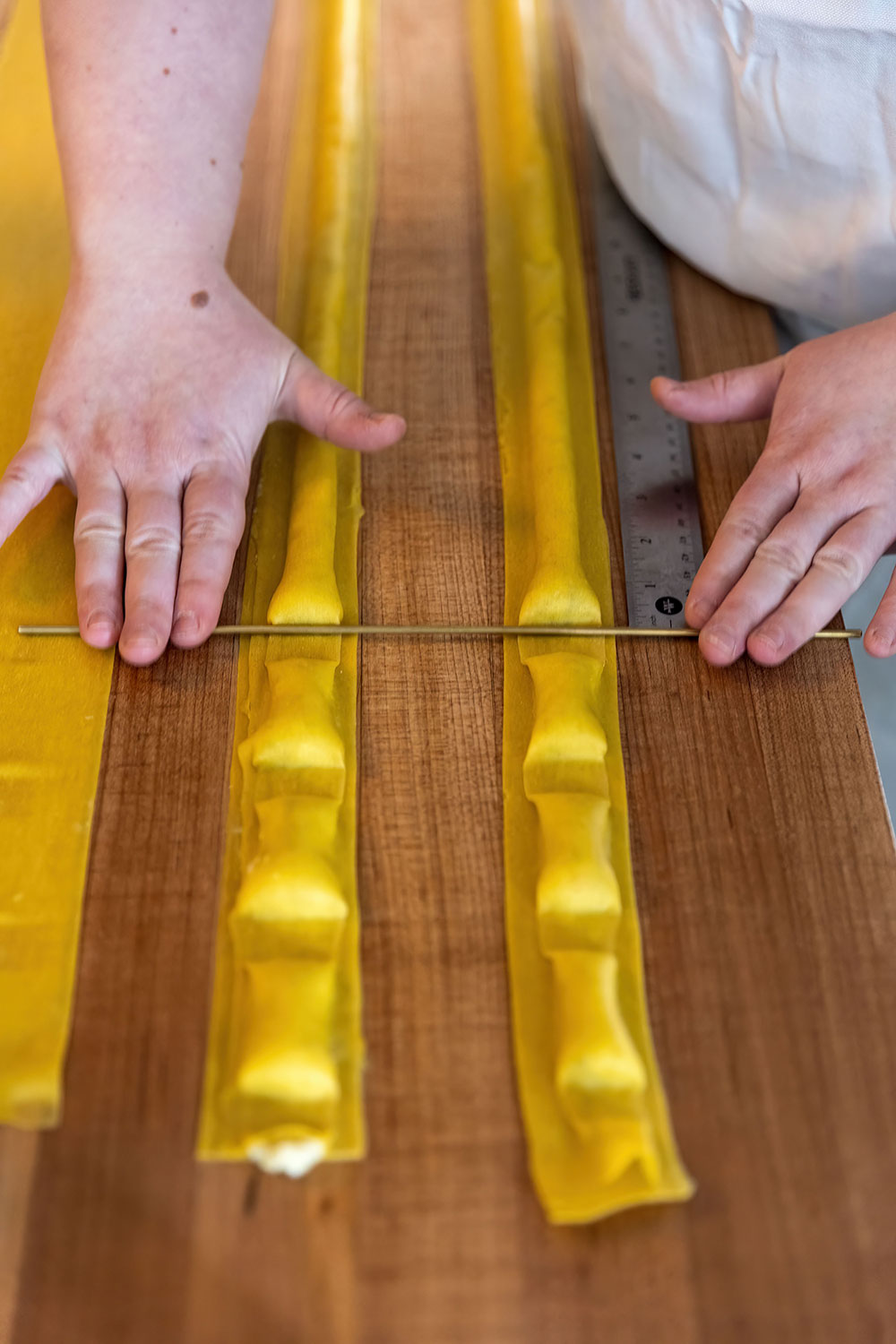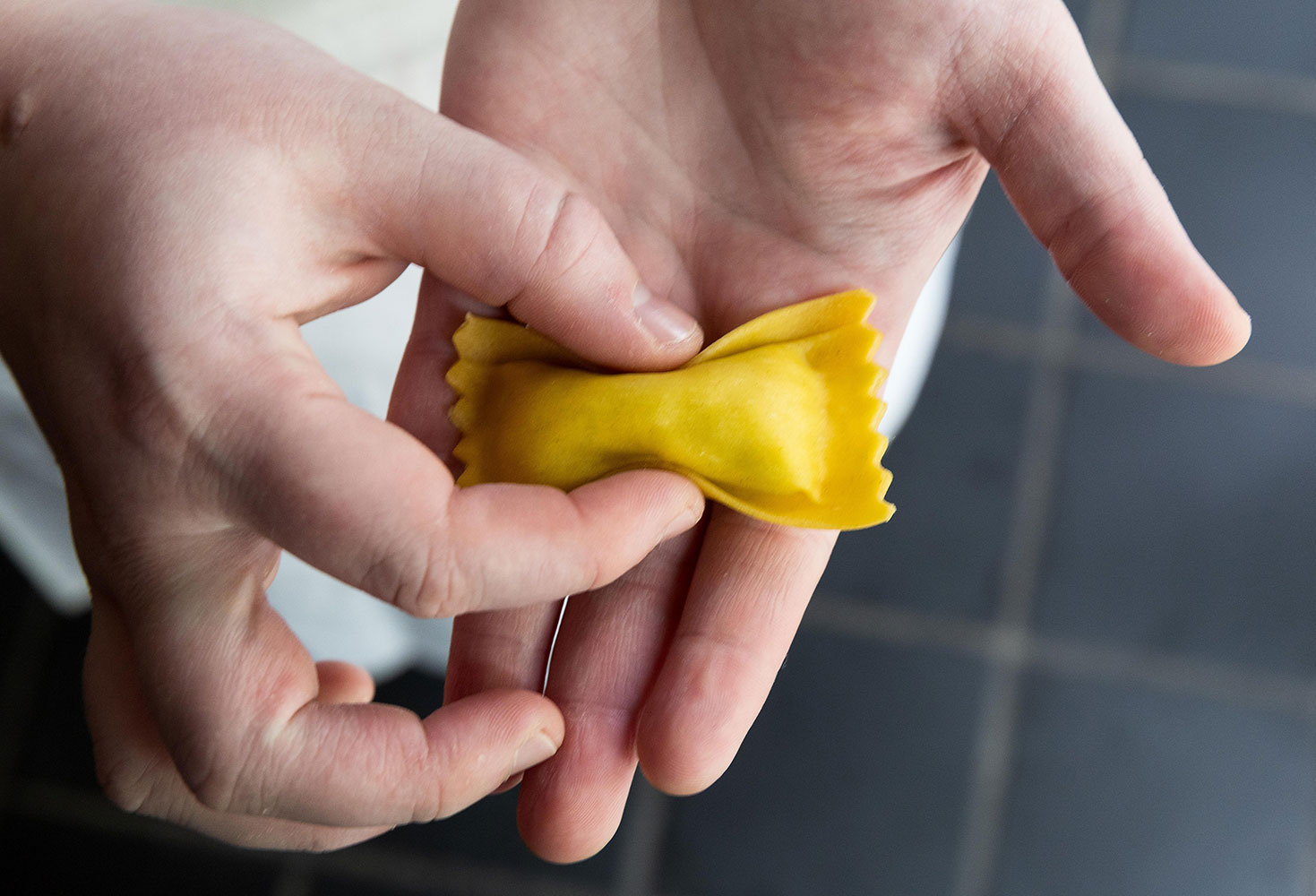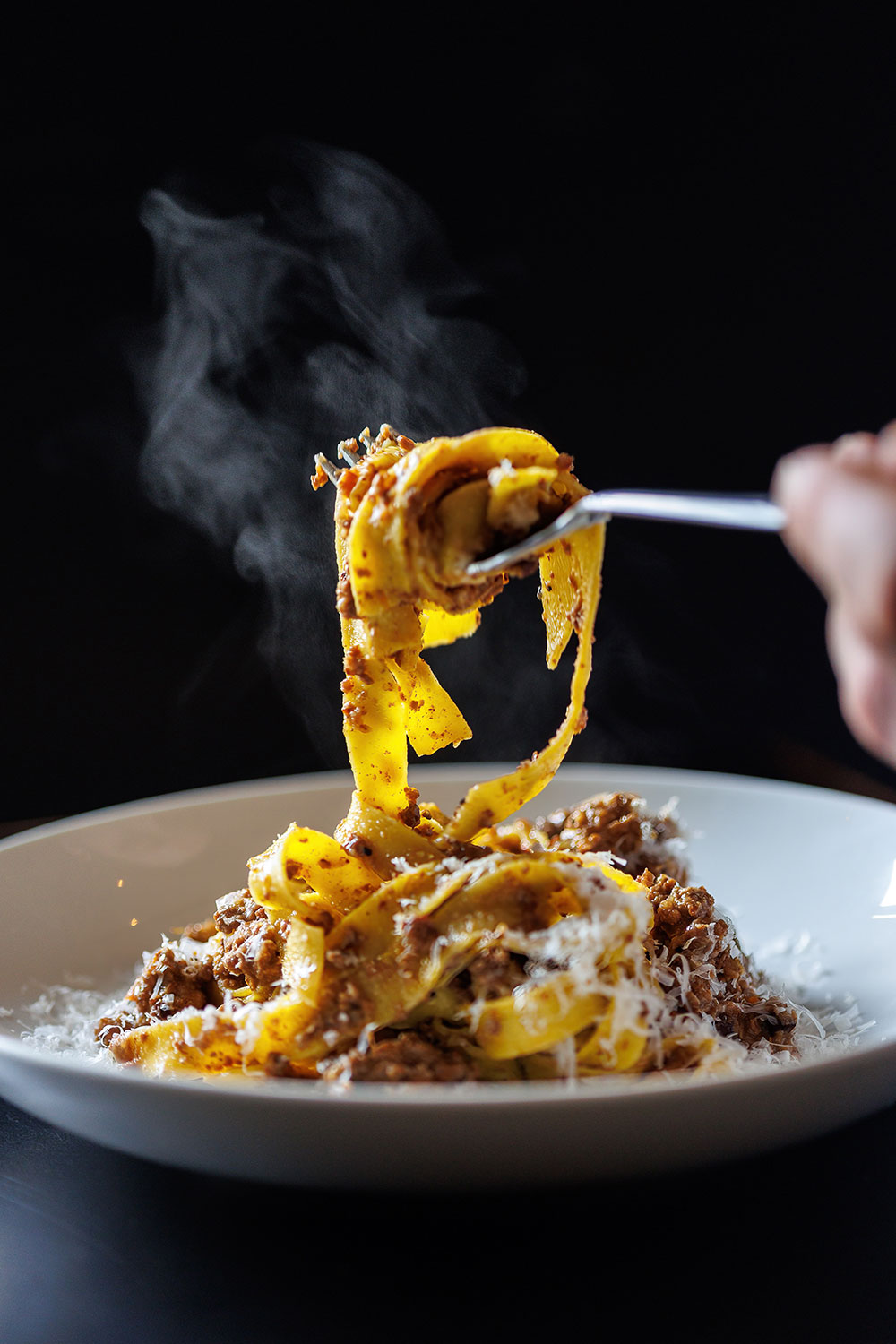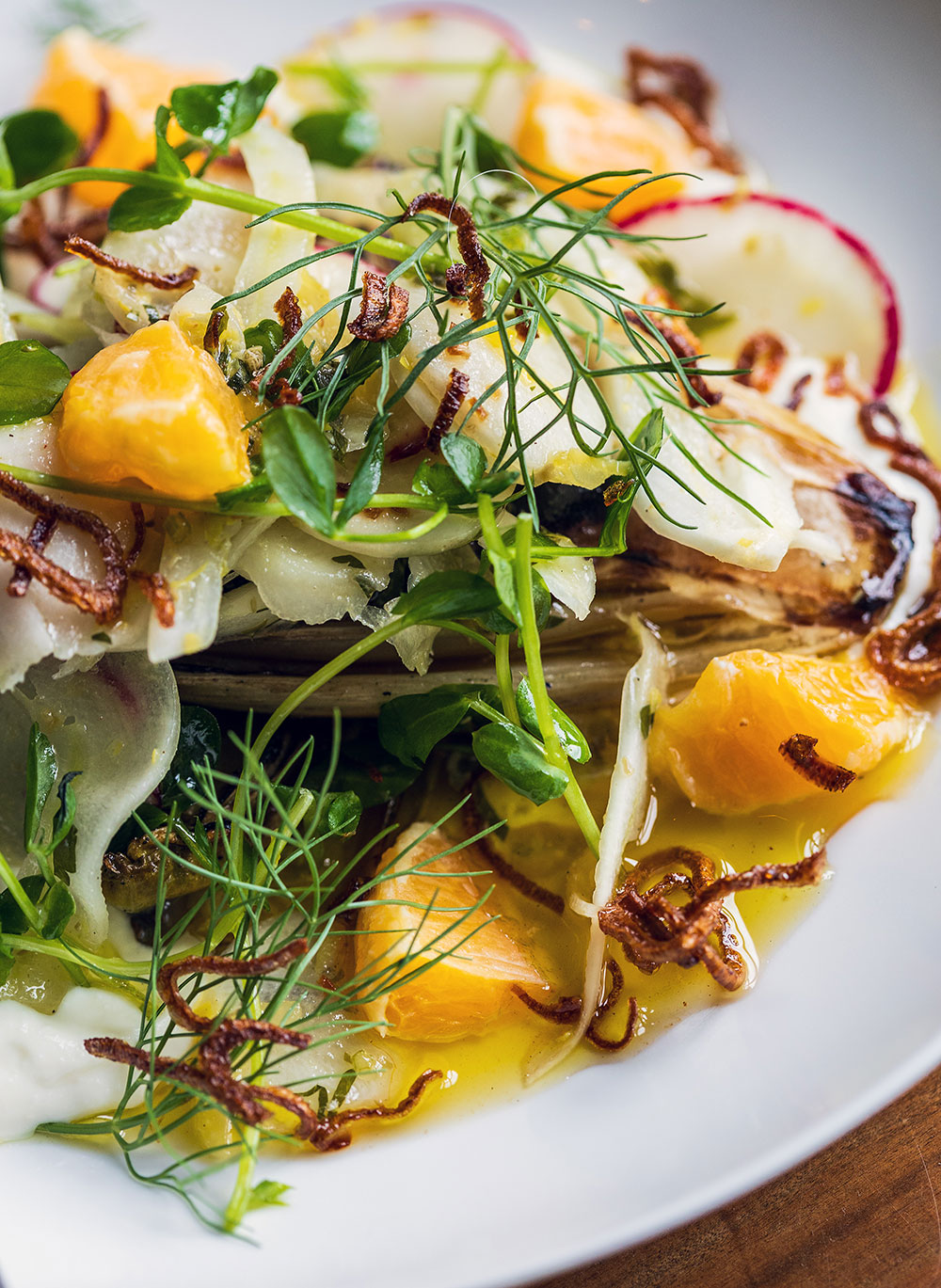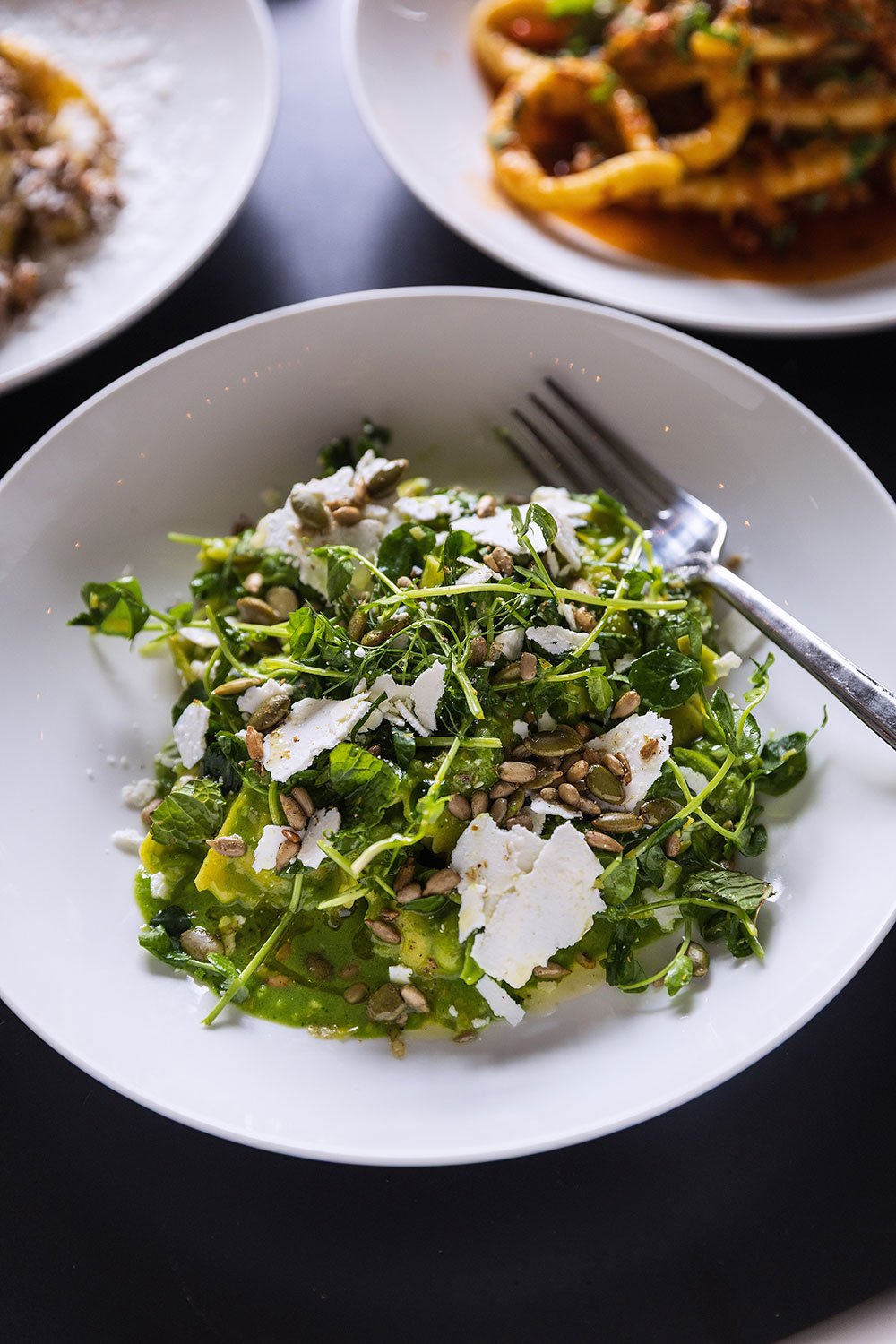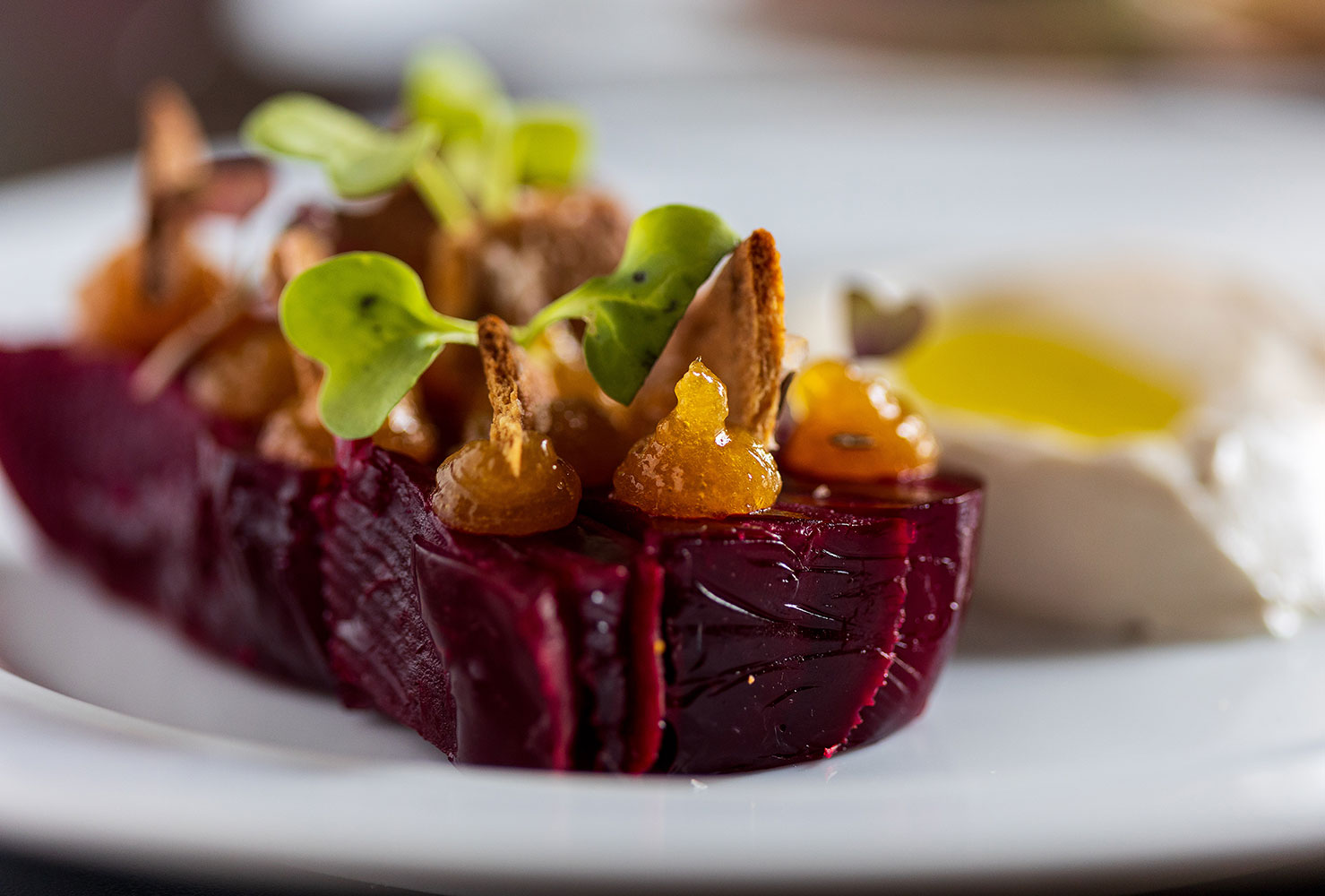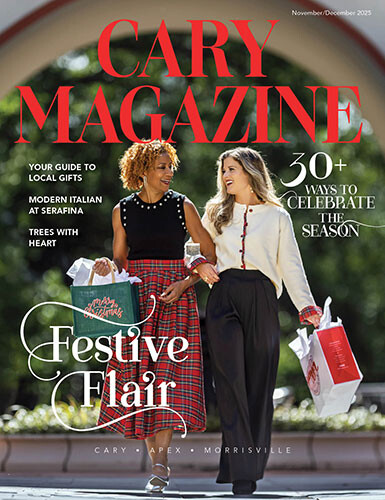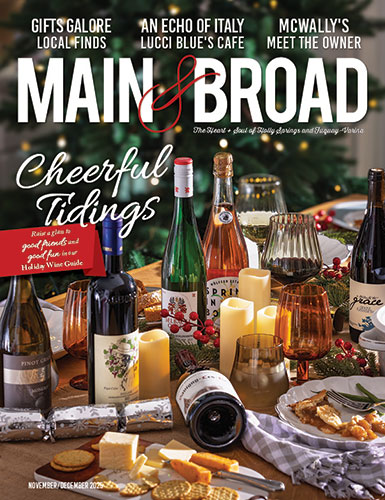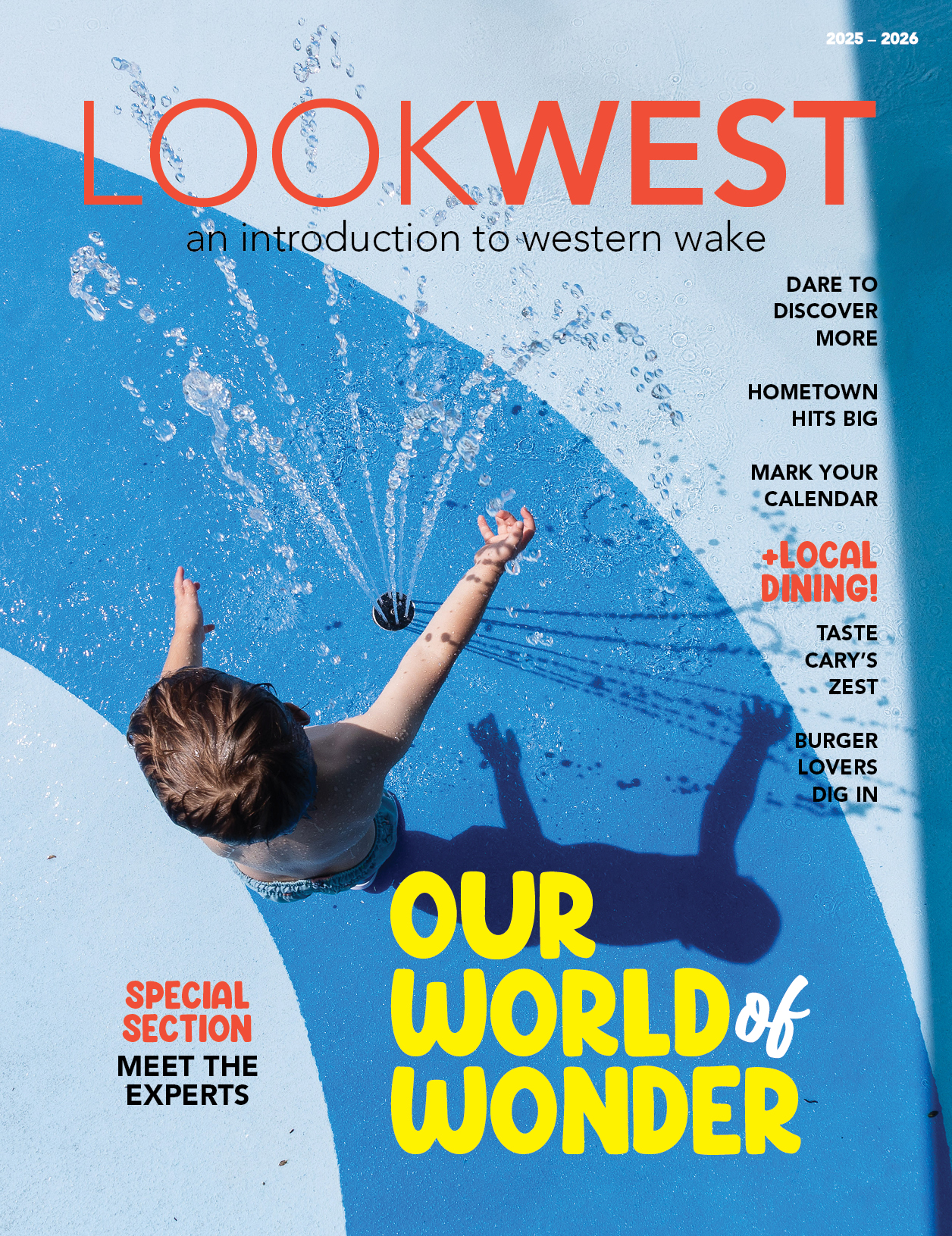Just before David Ellis, the chef/owner of Figulina, sits down to chat with me over the phone, he’s had a visitor: Derek Hennigar from Ordinary Furniture, who was in town to deliver some bar stools. If you’ve sat at Figulina’s bar — or at Humble Pie’s, the restaurant that preceded it and served as a Raleigh institution for 33 years — you’ve likely noticed the triangle-shaped stools Derek created three decades ago. In fact, Derek started his woodworking business at Humble Pie, in the corner of the restaurant that now serves as a pasta room.
“It’s a lot to live up to,” says David of Humble Pie’s legacy. “There’s a lot of pressure because it was such a well-loved restaurant, but, at the same time, it’s really nice inheriting something like that that is so well loved.”
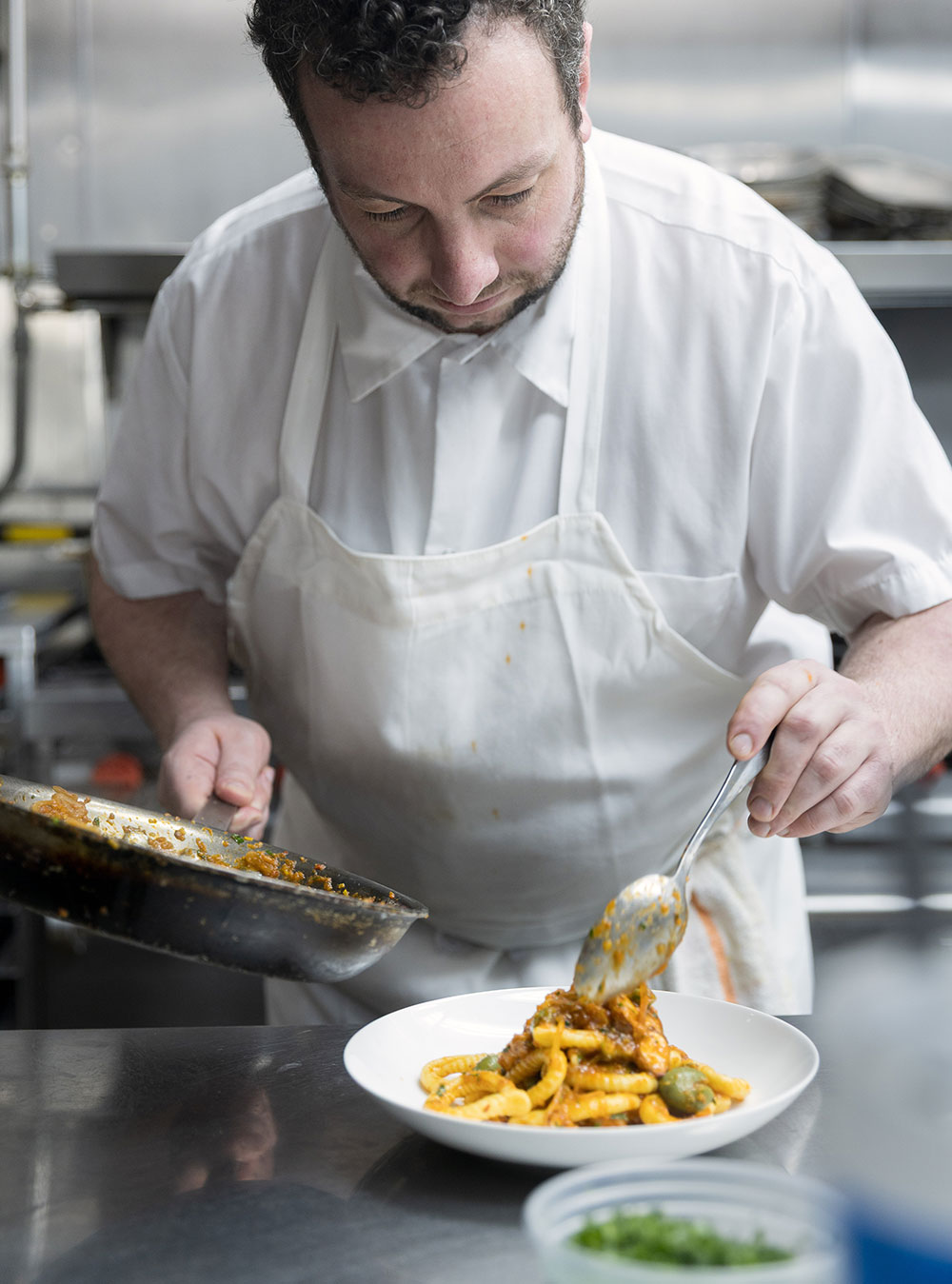
Chef David Ellis dishes handmade spizzulus pasta tossed with poached octopus, sofrito, and Castelvetrano olives
Respecting tradition while creating something new might just be David’s modus operandi — one that is reflected in almost every aspect of how he runs his restaurant, a 2025 James Beard Award Semifinalist for Best New Restaurant. Located in downtown’s Warehouse District, Figulina reflects an appreciation for the space’s rich past as well as a commitment to the handmade and local, both in the décor and on the menu.
The focus here is hand-shaped pasta, and the notion of craftsmanship — be it barstools or in the creative alchemy of flour, egg, salt, and water — pervades the place.
Though he served as the chef de cuisine at Poole’s Diner for several years, David is originally from Stoke-on-Trent, an area known as The Potteries in England. The name Figulina translates roughly to “potter’s workshop,” which clarifies that craft is the focus here, exhibited on the plate and elsewhere.
The charming line art and illustrations on the menu are courtesy of artist Sam Taylor, who also created the mural over the bar depicting a heron with fishes on a line. It is also Sam, David’s partner, who oversees the provisions market located in one corner of the restaurant, which offers a wonderfully curated selection of olive oils, chocolates, tinned fish, and home goods, as well as a fridge stocked with freshly extruded pastas to take home.
A fun introduction to dining at Figulina is to sit yourself on one of those stools at the bar for Aperitivo Hour (Tuesday through Thursday, 5–6:30 p.m.), featuring amari-focused cocktails and small snacks like spiced almonds, marinated olives, or a delicious brick of house-made focaccia. These light bites pair perfectly with the drinks and feel like the start of spring: hopeful.
The snacks — which include a plate of Lady Edison’s “Fancy” Shaved Ham, also encourage sharing, which, to me, creates an essential part of any cocktail hour: community.
Getting down to business, the dinner menu is divided into small-plate starters and pastas, and sharing among them with a dining partner isn’t a bad idea so as to order more. Any misconception that because Figulina’s focus is pasta, the restaurant is Italian is corrected by the starters, which venture into other territories.
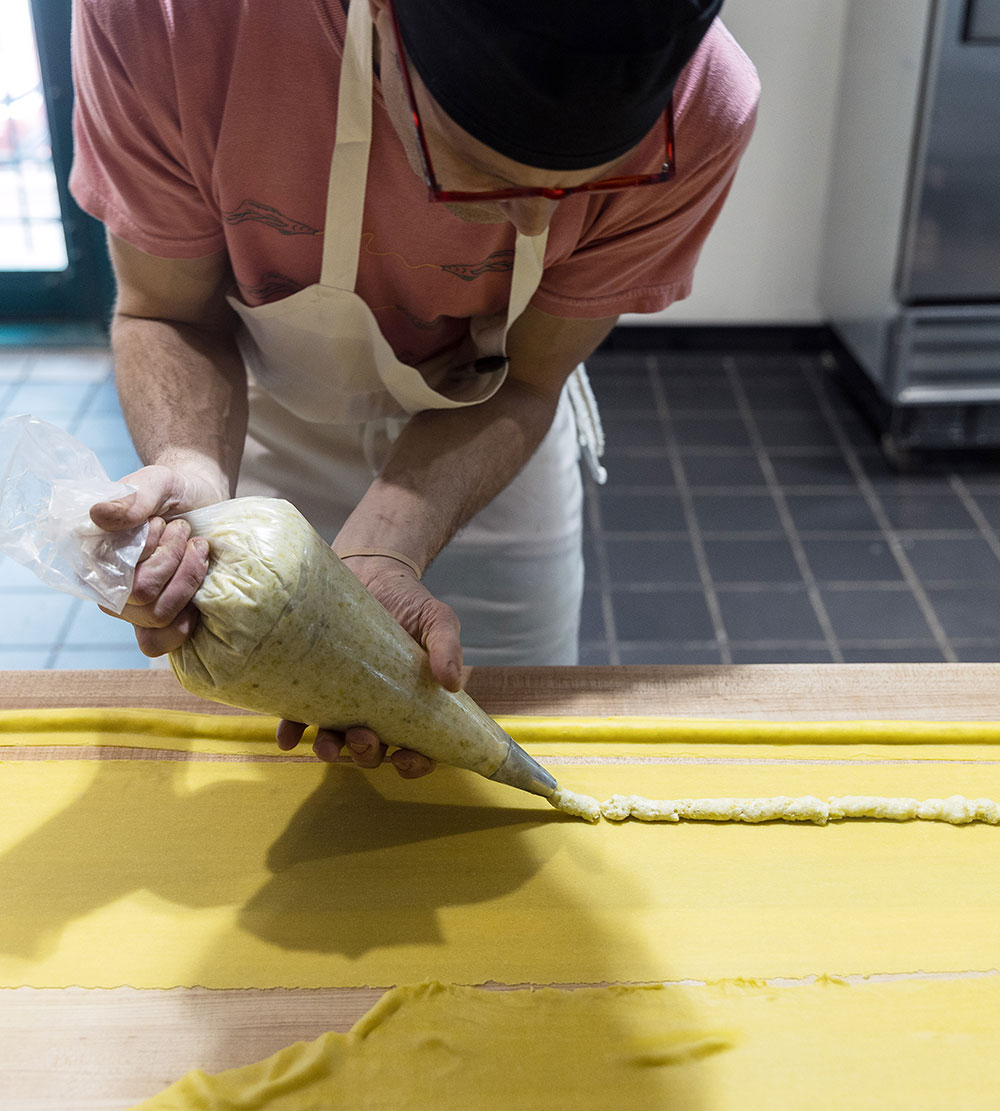
There are so many options, like salads whose complex flavors add up to more than the sum of their parts. The whipped ricotta changes seasonally. For spring, it’s served with charred endive, shaved spring vegetables, and a celery salsa verde (the Italian kind — no tomatillos here). Such unexpected elements show the range of influences David has at play in any one dish: Italian, European, Southern, and more.
“We try and keep ourselves rooted in Italian tradition, but our own little spin on that,” says David. “So trying as many local, seasonal ingredients as we can — some of these ingredients are just very tied to the South, and maybe you wouldn’t necessarily use them, but we do. …We use a lot of French techniques, but doing Italian kind of style food. We play around but, ultimately, we’re just trying to make delicious food.”
The same spirit of play, inclusivity, and craft is evident in the pasta selections. Here, David brings together his various influences with pasta serving as the foundation. In pasta, every shape serves a purpose: the lengths, surfaces, and contours all act in concert with what goes atop. There are hundreds of pasta shapes, each with its own origin and geographic specificity.
David began exploring the world of pasta during the pandemic. With restaurants closed, he had plenty of time to play. Learning to make various shapes by hand, he began to think of pasta as a vessel, which is where the idea of Figulina started. Inspired by chefs like Marc Vetri and San Francisco’s Flour + Water, David began to conceive of a restaurant that focused on handmade pasta but with a wider swath of influences than only Italian.
Sure, there are versions of the classics on the menu, like a Bolognese served on tagliatelle (the sales of which benefit community meals in partnership with the local nonprofit Now Serving) but David isn’t working toward verisimilitude.
Instead, he’s recreating the classics using local ingredients and incorporating a range of others. The dishes his kitchen is building are uniquely his own, which is what makes Figulina more than just another Italian place — it’s a place forged by the past and a very particular personal history.
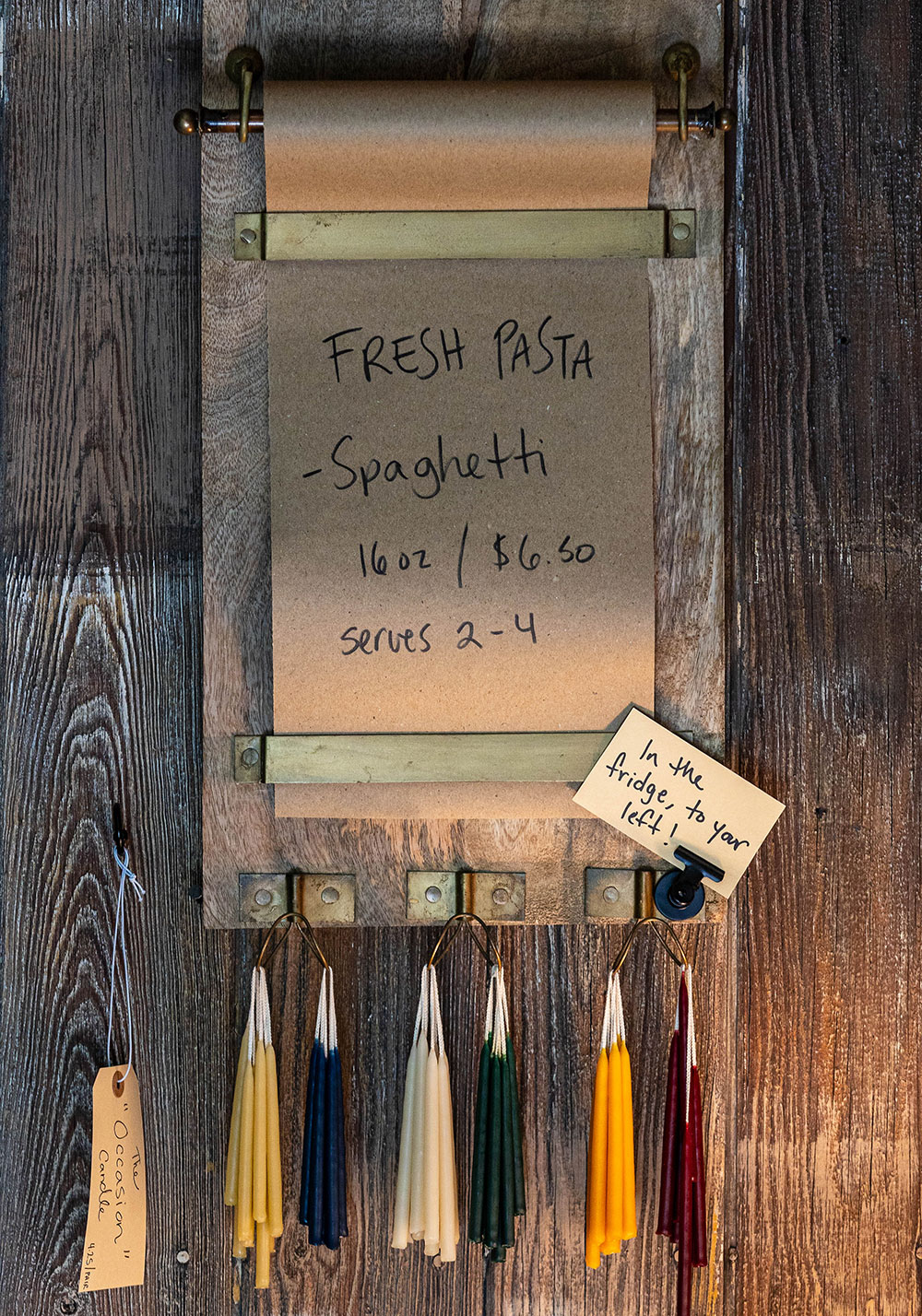
The orecchiette, which was added to the menu for spring, is topped with a rich, cider-braised pork cheek, charred cabbage, fennel pollen, and pine nut gremolata. The tender meat and other bits suspend themselves into the dents and crevices of the pasta perfectly. And though it had a wholly different, tender texture, the combination of succulent meat and sweet cabbage called up a perfectly rendered BBQ sandwich with slaw. It’s Italian, but it’s also Southern and something else.
Figulina’s Sunday brunch makes David’s British heritage most apparent. Not only does the menu feature scones with clotted cream and jam, it includes Bubble and Squeak, a dish traditionally made with leftovers from a Sunday roast. But like the dinner menu, there’s variety: Eggs Benedict and breakfast hash coexist with yogurt panna cotta and a porchetta sandwich. Mafaldine makes an inspired appearance as well, because why shouldn’t carbonara be breakfast? Especially when it’s made with country ham.
Similarly, the tidy dessert menu sums up the skillful interplay of disparate influences in only three offerings: a Bakewell tart (a classic British dessert that some of us have only seen on The Great British Bake Off); an olive oil cake; and a tahini mousse that features Viemoose. I can’t think of another restaurant where these items would appear together, and that is exactly the point.
Just as human touch is embedded in handmade ceramics — so, too, with handmade pasta. At Figulina, there’s no doubt a human is behind each plate.
- Garden Adventurer: Night-lilies
- Erica Chats: Fashion: It’s More Than Skin Deep!
- Out & About in Wake County: May/June 2025
- Celebrated Spirits: Yellow Umbrella
- Celebrated Spirits: Shark’s Tooth
- Shaped by Place
- 25 Years of Koka Booth Amphitheatre
- Pay It Forward: Diaper Train
- Small Business Spotlight: Young Writers’ Institute
- Art for All
- Indelible Ink
- Roadtrip to Raleigh
- A Song for Every Season
